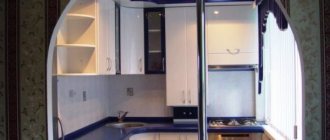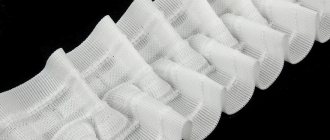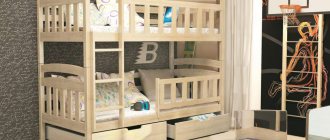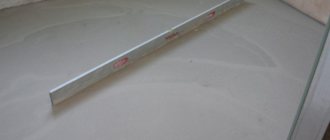An automatic washing machine has long become a common thing in almost every apartment. The device can be connected by technicians from the store where it was purchased, or by invited specialists. But many people prefer to install the washing machine themselves, especially since the process is not so complicated. If you got this household appliance from relatives or friends, or you simply don’t want to spend money on the services of specialists, then you can do all the work yourself. So how to install a washing machine correctly? For the normal functioning of the machine, you need to comply with all the requirements for its installation, correctly connect to the necessary communications, and also figure out how to ground the washing machine and why it is needed.
Bathroom
The simplest solution is to install an automatic washing machine in the bathroom. Very often washing machines are placed in it. The advantages are obvious: all communications are close, the drain hose can simply be directed to the bathroom. But there are also plenty of disadvantages to such placement.
- Due to high humidity, a regular outlet cannot be installed in the bathroom; it must only be moisture-proof.
- All parts and assemblies of the automatic machine will have to work in conditions of excess humidity, which will not extend their service life.
- Most bathrooms in apartment buildings have more than modest dimensions. You will have to sacrifice something to put a washing machine there. Sometimes in such cases the sink is removed, which does not add convenience.
Preparing the installation site
When a washing machine is purchased for the first time in a new interior, it is very important to think about the place where it will be permanently located. This is an important point, since it will be necessary to enter the dimensions in a certain place. Therefore, if there is a certain position, it is necessary to measure 3 parameters:
- Length.
- Depth.
- Height.
In this case, you need to add 1 centimeter to each obtained size. This is important so that the product fits in freely or can then be removed from the required location without any problems. That is, this 1 cm on each side provides such an important backlash.
It is necessary to choose a place for installation so that all three systems are located nearby or there is an opportunity to bring them there.
If we consider not the dimensions of the location, but specifically the location in an apartment or in a private house, then most often this household appliance is located:
- You can often find this household appliance in the kitchen. In this case, connecting to communications is also convenient, since they are located close. For those who are meticulous about the aesthetic parameters of any room, it is necessary to think in advance about installing a washing machine in a cabinet niche. In this case, you can organize the location in such a way that the front door completely covers the device from view.
- If the toilet room is large enough in size, then you can put the washing machine here too. True, some manage to display the unit even in a small room. In this case, it is mounted above the toilet. But it is precisely this kind of installation system that requires careful consideration and ensuring the proper level of reliability.
- You can also install a typewriter in the hallway. But most often this is due to hopelessness. The main negative aspect of this arrangement is that all communications have to be pulled here. In addition, from here the noise spreads quite intensively to all corners of the home.
- If the apartment has a storage room (closet), then you can install the machine here. Perhaps this is the best option if bringing communications here will not be too costly or problematic. After all, this is an isolated room from where noise will not be heard if the door is closed. The product will not spoil the aesthetics of the premises with its appearance. In addition, it will be possible to equip an entire laundry room here, placing all the laundry products, a laundry basket and other small items.
- In a private house, such household appliances are also located in the basements. This is very convenient, but the underground must be heated.
- In bathroom. Convenience in this case is due to the fact that all communications are located in close proximity. The appearance of the product fits harmoniously into the space. If you plan to renovate this room with a complete re-equipment of plumbing, then you can place the washing machine under a sink of a suitable design with an equipped drain along the rear plane.
Important! If it is possible to place this household appliance in another place, then it is worth taking advantage of it. This is due to the fact that there is always a high level of humidity in the bathroom, which negatively affects the service life of the product. Causes rust and warping of metal and internal parts.
Kitchen
Here communications are also nearby, and there is more free space. In this case, the automatic machine is installed under the countertop, and for this it is not even necessary to select a built-in model. Please note that a washing machine installed under a countertop must be placed on the floor, and not on the base of the furniture, and the back of the box in which it will be located must be absent.
Corridor or storage room
If the width is sufficient, you can install the washing machine in the hallway. But it’s better if there is a small storage room next to the bathroom. It is ideal: it is easy to make a hole in the partition for laying communications, and comfortable conditions will ensure a long service life for all units and mechanisms.
USEFUL INFORMATION: Design of a bathroom and toilet in an apartment 23 photos
During operation, the washing machine is subject to strong vibrations, so it is advisable to install it on a rigid base - concrete or ceramic tiles. How to install a washing machine on a wooden floor, which increases vibration? You can use special rubber stands that dampen not only vibrations, but also noise. You can buy them at the same store that sells washing machines.
Where to put a washing machine in a small bathroom?
Spacious rooms leave room for imagination, but how can owners of “Khrushchevka” apartments, modest in size, install equipment? New items in the furniture industry, miracles of technology, plumbing, finds, and inventions of folk craftsmen will help you find an original solution.
Traditionally, the main massive element is placed along the room. There is still a narrow area at your disposal where you need to “squeeze” a washbasin, a cabinet with household chemicals, cosmetics, and a laundry basket. Where can you install even the most compact washing machine? Here are some options for a small bathroom.
Under the bathroom sink
The “washing machine plus sink” combination will help free up space. A special water lily sink is installed above the device. The drain pipes of the “tricky” washbasin are not in the center, but in the back wall. This leaves room for maneuvers during installation and operation of the machine, making it safe.
Important:
- the area of the sink should be larger than the body of the washing machine;
- the drainage system is located behind the equipment;
- the gap between the washbasin and the device is 2-3 cm;
- connection to the water supply is made by a special siphon with two pipes.
How to hide a washing machine under the sink?
If the washing machine does not harmonize with the interior of the bathroom, it can be hidden under the washbasin using the doors of a special cabinet, or covered with a curtain.
Common table top
By building the machine under the countertop, you can increase the capacity of the washbasin and free up access.
Unusual placement of the washbasin
Are you the owner of a bathroom with a narrow drain? You can hang the sink above it. This will not affect ease of use, but will free up space. Such “non-classical” plumbing fixtures of an original form will help to rationally “beat” any interior.
Shower stall
Do you prefer showering to other procedures? Install a shower stall instead of a bathtub. Such a replacement will help rationally plan the space and give the room a modern look.
Combination of bathrooms
From two small “closets” you can make one spacious bathroom, in which there will definitely be a place for washing equipment. Such redevelopment requires permission from utility services. If the wall between the restrooms is load-bearing, be prepared to receive a refusal.
Between the bathroom and the toilet
A combined toilet allows you to place a washing machine between the plumbing. It is convenient, compact, practical.
How to close a washing machine?
Does the appearance of the equipment contradict the design solutions in the interior? How to hide the facade of the case and protect it from moisture? A cabinet (box, tall cabinet) or niche will help you.
Cabinet for washing machine
This solution kills two birds with one stone:
- the machine is hidden, protected by doors;
- additional shelves and compartments for storing detergents, household items, and dirty linen make housekeeping easier.
Preparing the washing machine for installation
How to install a washing machine so that it does not jump or shake? If the car is new and just delivered from the store, then the first step is to rid it of the box and fasteners that protect the product during transportation. These can be bars and staples.
When transporting the washing machine, the rotating parts are firmly fixed with bolts. They should be unscrewed and the holes should be closed with the plastic plugs supplied. The drum should hang on the springs. Once you turn on a machine that has not had these bolts removed first, it will likely result in costly repairs.
When delivering from a store, all these manipulations should be completed before signing the receipt documents. It is necessary to carefully check the washing machine for external damage and scratches. If you shake it a little, there should be no knocks or other extraneous sounds. Without such a check, it is quite possible to receive a unit with a defect, and it will be almost impossible to prove that the device was not damaged by you.
The washing machine is installed on a pedestal and leveled using a level. Twist-out feet are used for adjustment. The slightest misalignment is fraught with increased vibration and noise during washing.
Stage 3. Leveling the washing machine
For proper operation of all components and assemblies of the washing machine, it is necessary that it stands on a solid and level base. The equipment should not wobble or vibrate while the drum rotates.
To dampen vibrations, you can use special anti-vibration stands, which are sold in household appliance stores as additional accessories for washing machines. You can also easily make such vibration-damping pads yourself by cutting them out of a piece of felt or rubber 3-5 mm thick.
When installing washing machines, it is very important to maintain a strictly horizontal position of the housing. When distortions occur, the wear of components increases, especially those that rotate quickly: drum mounts, pulleys, and rolling bearings. In this regard, the base on which the machine will stand must first be leveled.
Small unevenness in the floors can be leveled by turning the adjusting nut on the support legs to the right or left with a wrench. This allows you to change their height by 1-2 cm up or down.
To determine a strictly horizontal position, it is recommended to use a building level. The slope angle of the equipment ready for work should not exceed 2-3o.
Connecting the washing machine to the water supply
The process of supplying water to the washing machine is simple. We will tell you how to install and connect the washing machine. Connection diagrams may be different, but the general requirements must always be met:
- The pipeline branch supplying water to the washing machine must be equipped with shut-off valves. It is recommended to use ball valves. Then, if a leak occurs, you can quickly shut off the water supply to the machine.
- The pressure in the pipes should not be less than one atmosphere. If the pressure is insufficient, you will have to install a special pump.
- Clogged water can quickly damage the washing machine mechanism. As a rule, most of their models are equipped with standard mechanical cleaning filters. If water of increased hardness enters the apartment, it is recommended to additionally install a polyphosphate filter. It is a flask filled with an active substance that prevents the appearance of scale. The filter media can be easily changed as you use it.
USEFUL INFORMATION: Mold in the bathroom: getting rid of the scourge at home
It is important to remember that water passed through a polyphosphate cartridge is only suitable for technical needs and cannot be used for food purposes.
To connect the washing machine, flexible hoses with a diameter of ¾ inches are usually used. The hot water supply is used very rarely, so one hose for supplying cold water is sufficient.
- If the apartment has metal pipes, then the easiest way is to make the connection yourself using a crimp coupling. Its two halves are bolted to the pipe, securely fixing the sealing gasket. After this, a hole in a pipe with a diameter of 10 mm is drilled directly through the threaded outlet for the tap. A ball valve is installed, and a flexible hose leading to the machine is connected to it. The joints are sealed with rubber cuffs.
- A tee is installed on metal-plastic pipes. After the tap is made in the right place and the fitting is installed, the tap and flexible hose are installed. You can connect the washing machine to the water supply.
- Sometimes a method is used to supply water to the machine through a tee on the outlet of the water supply for the mixer or flush tank. But before each wash, you will have to unscrew the flexible hose leading to the mixer. Therefore, this method can only be considered as a temporary option.
Second phase. Water connection
Connecting the washing machine to the water supply is a process that requires special attention, accuracy and precision. If you do everything correctly, your machine will work properly. To connect the equipment to the pipeline, you will need flexible hoses with a diameter of 2 cm. To connect the washing machine to water, you need to perform the following steps:
- Find the right place in the water supply and cut the thread.
- What is needed to install the valve? Fasteners - they guarantee reliable fixation.
- Install a protective mesh to prevent small foreign objects from entering the drum.
Advice! Clean the mesh and turn off the valve after each wash - this will ensure stable and efficient operation of the machine.
To supply water, you need a ready-made outlet that connects to a faucet or cistern. This simple installation diagram will help you handle the water connection yourself.
Connecting the washing machine to the sewer
In addition to supplying water to the washing machine, it is also necessary to resolve the issue of draining waste liquid. Simply put, you need to connect the household appliance to the sewer. The easiest way is to attach the drain pipe to the hook that comes with each machine, on the edge of the bathtub or sink. But this method is also the most unreliable: you cannot use a bathtub or sink at the same time, in addition, the drain hose can simply be accidentally touched, which will lead to flooding of your neighbors. Therefore, it is safer to make a permanent connection to the washing machine.
There may be several options:
- Through the sewer lines of the sink, for which you need to purchase a special siphon with a drain for washing machines. It should be located above the siphon knee. In this case, the unit must be installed nearby, since the drain hose cannot be extended.
- Insert the machine hose into the plastic sewer pipe. It is easy to make a hole in it with a hacksaw, after which a tee and a section with a pipe are inserted into it. All connections are reliably sealed, and the drain hose is inserted into a separate siphon.
Often, the drain design of many washing machines has a check valve that prevents water from being sucked in from the sewer. If it is not there, then the drain hose must have an S-shaped bend and be positioned as written in the instructions. That is, the connection to the sewer must be below the level of the washing machine tank.
How to properly connect a washing machine to power?
Modern models of washing machines have quite a solid power, which averages about 2.5 kW. Despite the presence of double insulation, these devices are sources of increased danger. Therefore, their connection must be made through a separate circuit breaker with an RCD (residual current device), and grounding is required.
It is important to note that many companies do not install washing machines if there is no grounded outlet. The warranty for these expensive household appliances is not valid if it turns out that they were operated without grounding.
In old houses, where sockets do not have a grounding wire, grounding is organized through a panel from which electricity goes to the apartment. If you do the grounding yourself, then remember that you should not connect the washing machine body to pipes or heating radiators. This can lead to damage to expensive equipment, and the possibility of electric shock to people in neighboring rooms cannot be ruled out.
USEFUL INFORMATION: For proper air exchange in the bathroom you need an exhaust fan with a timer
The difavtomat will allow you to save your expensive car from power surges; it will break the circuit if water gets in or a person touches a bare wire. Modern automatic machines combine the useful qualities of conventional automatic machines and RCDs, so it is better to give preference to them. If you are not a qualified electrician, it is better to contact a specialist. They will select the appropriate automatic device according to the parameters and provide high-quality protection from electricity.
To avoid a situation where, when you turn on the washing machine, the automatic circuit breaker (RCD) knocks out, you need to:
- lay high-quality wiring, replace old ones;
- install a circuit breaker or RCD that is suitable for the network parameters and do it correctly;
- monitor the condition of the machine.
Advantages and disadvantages
Placing the washing machine in the bathroom has several advantages:
- convenient to soak laundry - no need to rush around the apartment with a basin;
- washing powders, dirty laundry in the kitchen - unpleasant, harmful, contrary to hygiene;
- the noise of the machine interferes with eating and communicating;
- a flood in the bathroom with a possible breakdown has fewer consequences and is easier to eliminate;
- ease of installation is determined by the close location of water and sewer pipes.
A big drawback is high humidity, which often damages mechanisms filled with electronics. With proper placement and careful care, damage can be avoided.
Installation Rules
- Moisture protection. When bathing or washing, water should not get on the body of the washing machine or the socket. It is important to ventilate the room even if there is a good hood. Use moisture-resistant sockets (example in the photo).
- Protection from mechanical damage. The machine should not hit walls, furniture, plumbing, and heavy objects should not be placed on it.
- Proximity of communication lines. The location of the unit must correspond to the length of the intake and drain hoses and the electrical cord of the machine. Connecting extension cords causes a malfunction, flood, or short circuit.
Compliance with these simple but important principles is a guarantee of safe long-term operation. Now all that remains is to find an aesthetically pleasing, comfortable place for your assistant to make laundry enjoyable and enjoyable.











